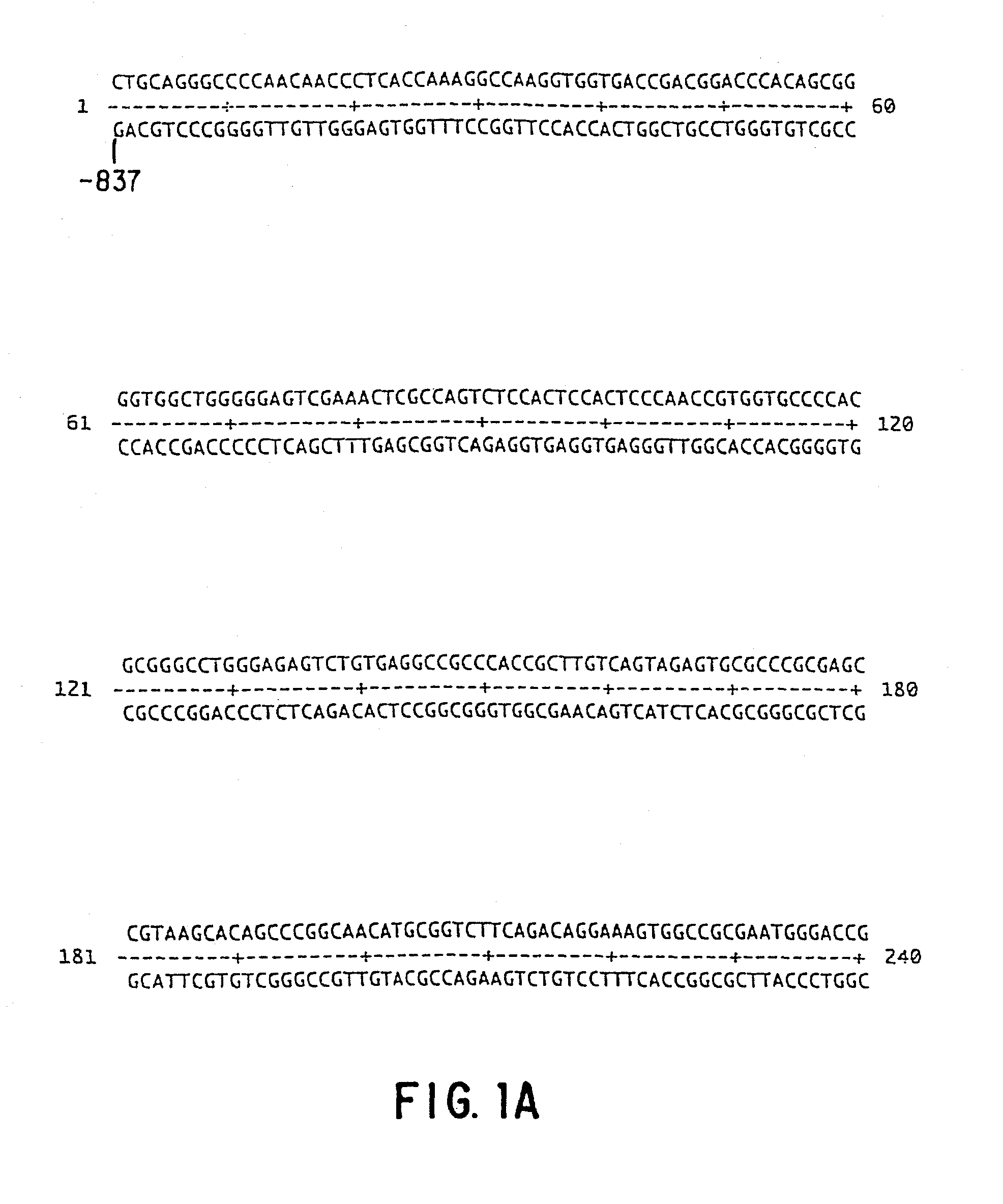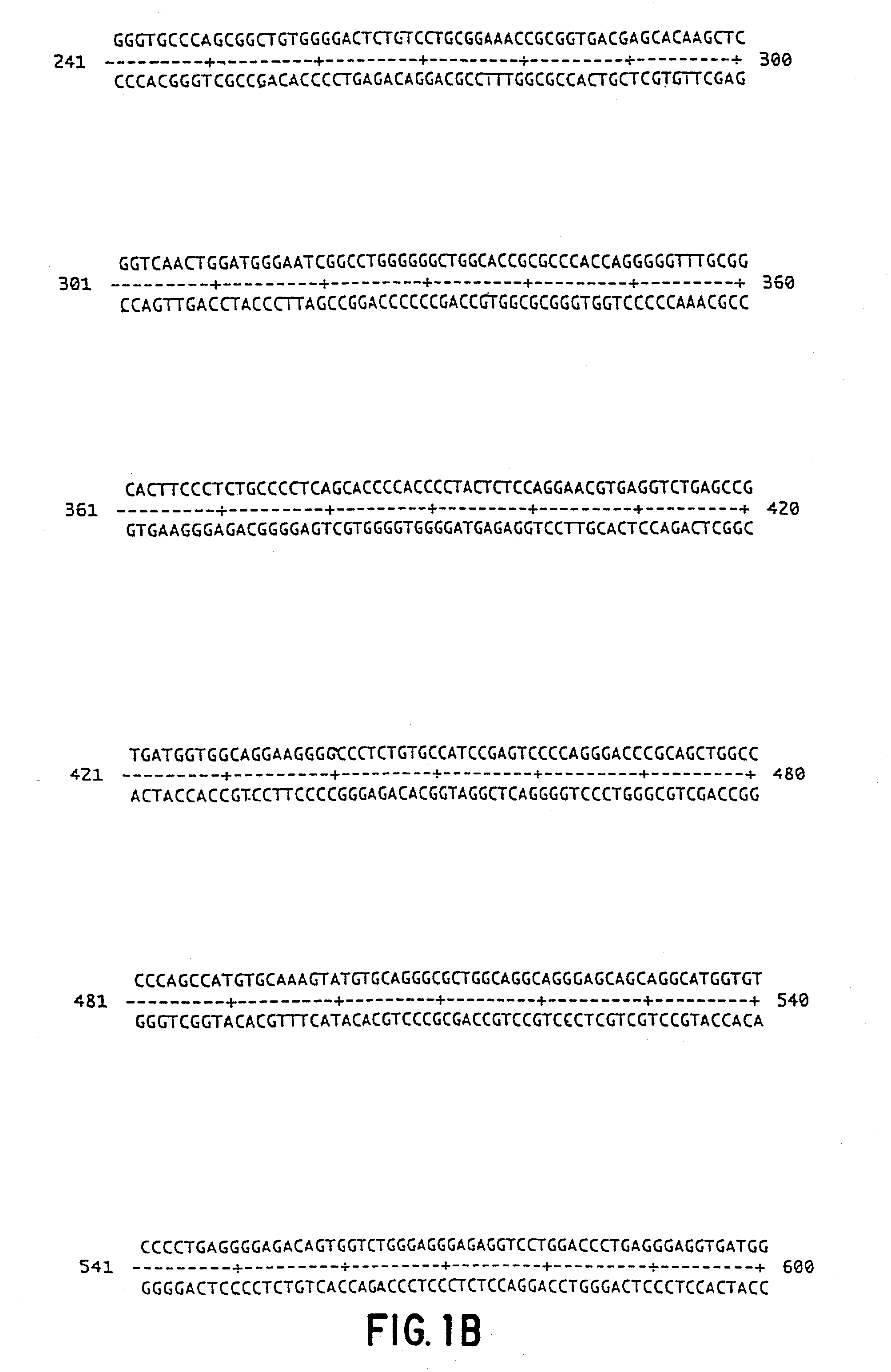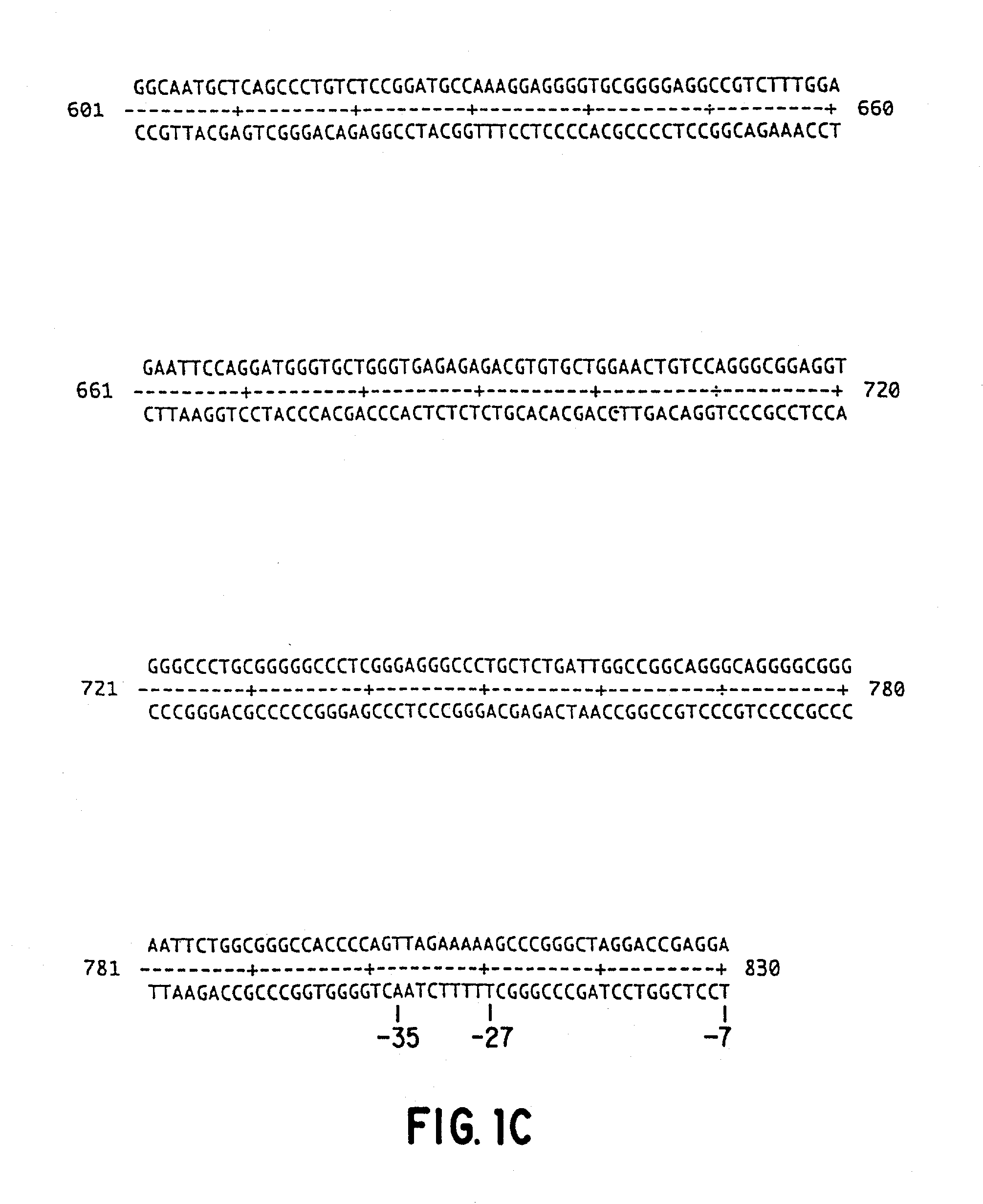Methods and compositions for inducing tumor-specific cytotoxicity
a cytotoxicity and tumor technology, applied in the field of tumor cell biology, can solve the problems of limiting the usefulness of cea transcriptional regulatory sequences as tumor-specific regulatory regions, and the controversy surrounding tumor suppressors, so as to inhibit the spread (metastasis) of cancer, inhibit the replication of cancer cells, and reduce tumor size
- Summary
- Abstract
- Description
- Claims
- Application Information
AI Technical Summary
Benefits of technology
Problems solved by technology
Method used
Image
Examples
example 1
6.1 Example 1
H19 Regulatory Sequences Facilitate Expression of a Heterologous Polynucleotide in Tumor Cell Lines
[0315] This section describes the construction of a variety of expression vectors containing a CAT reporter gene placed under the control of H19 transcriptional regulatory sequences and their transfer into several different bladder cancer cell lines.
6.1.1 Materials and Methods
[0316] Cell Lines and Transfections. Bladder cancer cell lines HT-1376, EJ28, T24P, 1197 and UM-UC-3 were obtained from the American Type Culture Collection (ATCC) and maintained according to ATCC recommendations.
[0317] Transient transfections were carried out using a calcium phosphate precipitation transfection method. Precipitants (containing 7 .mu.g plasmid) were added in 1 ml of media to 0.3.times.10.sup.6 cells in 30 mm dishes. After 16 hours, transfection media was removed and fresh media added. Cells were harvested 24-96 hours after transfection and CAT activity determined using the butyryl-CoA...
example 2
6.2 Example 2
A Toxin Gene Under the Control of H19 Regulatory Sequences
6.2.1 Materials and Methods
[0323] The expression constructs described above in Section 6 can be modified to express a sequence encoding a toxic product or a prodrug instead of CAT. For example, the sequence encoding the CAT gene product is removed and replaced with a sequence encoding herpes simplex virus thymidine kinase (HSV-TK) using standard cloning methods that are well known in the art.
[0324] The H19 / prodrug expression plasmids are transfected into bladder cancer-derived cell lines as described in Section 6. When transfected into bladder cancer cell lines, an H19 / HSV-TK expression plasmid induces bladder cancer cell specific cytotoxicity in the presence of ganciclovir.
example 3
6.3 Example 3
Expression of H19 in a Mouse Model of Chemically Induced Bladder Carcinoma
6.3.1 Materials and Methods
[0325] Seventy-five week old female C3H / He mice (Charles River) were housed at 6 mice per cage and allowed to acclimatize in an air-conditioned room with a 12 hour light / 12 hour dark cycle. At 8 weeks of age, the experiment was begun and the mice divided arbitrarily into a control group (10 mice) and experimental group (60 mice). The experimental group of mice were given 0.05% N-butyl-N-(4-hydroxybutyl)nit-rosamine (BBM) (Tokyo Kasei Kogyo Co. Ltd., Tokyo, Japan) dissolved in their drinking water ad libitum. Control mice were given tap water. Animals from both groups were killed at 4, 8, 12, 16, 20 and 26 weeks after the start of the experiment. The bladders were excised, fixed, and embedded in paraffin blocks using standard procedures.
[0326] Preparation of probe. A 2.1-kb fragment containing the mouse H19 coding region was subcloned into the pBluescript II KS plasmid (S...
PUM
| Property | Measurement | Unit |
|---|---|---|
| clotting time | aaaaa | aaaaa |
| particle size | aaaaa | aaaaa |
| total volume | aaaaa | aaaaa |
Abstract
Description
Claims
Application Information
 Login to View More
Login to View More - R&D
- Intellectual Property
- Life Sciences
- Materials
- Tech Scout
- Unparalleled Data Quality
- Higher Quality Content
- 60% Fewer Hallucinations
Browse by: Latest US Patents, China's latest patents, Technical Efficacy Thesaurus, Application Domain, Technology Topic, Popular Technical Reports.
© 2025 PatSnap. All rights reserved.Legal|Privacy policy|Modern Slavery Act Transparency Statement|Sitemap|About US| Contact US: help@patsnap.com



